Authored by Gladis Zinati1*, Tara Valentine2, Jessica Lang3, and Daniel Kemper4
1 Director of the Vegetable Systems Trial, Rodale Institute, Kutztown, Pennsylvania, U.S.A.
* Corresponding author Email: gladis.zinati@rodaleinstitute.org
2 Field Manager, University of Kentucky, previously Research Coordinator at Rodale Institute
3 Research Coordinator, Rodale Institute, Kutztown, Pennsylvania, U.S.A.
4 Assistant Farm Manager, Rodale Institute, Kutztown, Pennsylvania, U.S.A.
Find a downloadable PDF of this article by scrolling down to the “Resources” section.
Introduction
The Allium Leafminer (ALM), an invasive pest, feeds on allium crops such as leeks, chive, onion, and garlic, causing damage that results in crop losses. In the United States, the presence of this pest was first confirmed in Lancaster County, Pennsylvania (PA) in December 2015. It continued to spread to other PA counties in 2016 and was reported in Maryland, New Jersey, New York, and Massachusetts in 2019.
This web article is written to provide vegetable and allium growers, as well as home gardeners, with information about ALM identification, life cycle, the pest’s damage, and viable tools to reduce losses to this pest.
Allium Leafminer Identification
The allium leafminer adult is a true fly, greyish in color, 3 mm long, and with a yellowish-orange area on its head with black behind the eyes (Photo 1). Legs are dark with yellowish knees and striped yellow abdomen. Two white halteres (appear as dots) located under clear wings with dark veins (Photo 2).
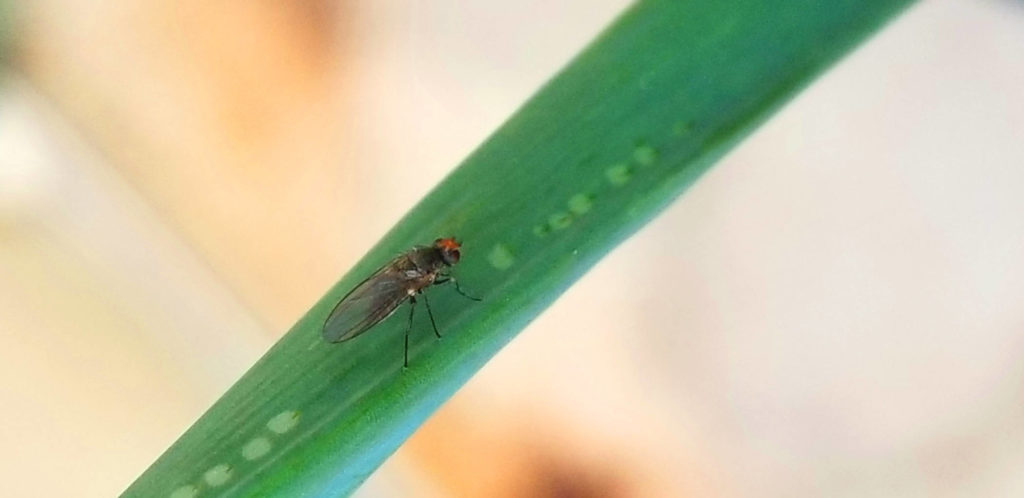
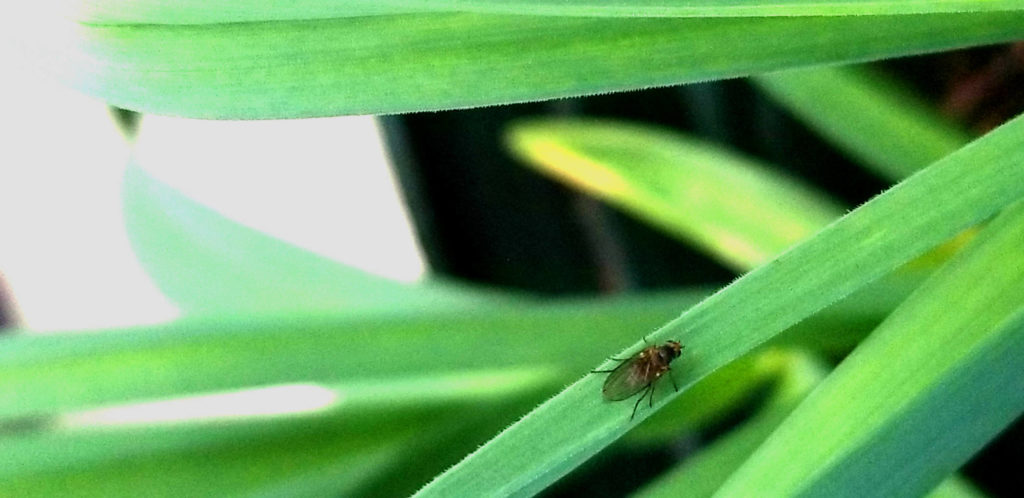
Allium Leafminer Lifecycle
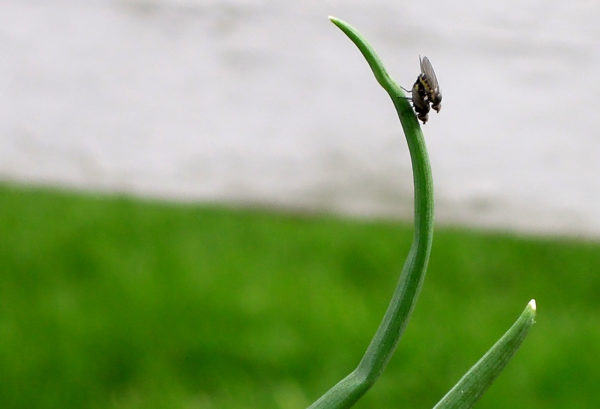
In Pennsylvania, the pest overwinters as pupae attached to allium plant debris or near the soil surface. In early spring, adults emerge from soil after an accumulation of 250 degree-days at temperature threshold of 3.5 oC. In Pennsylvania the emergence occurs around April 20, depending on the location. After emergence, adult ALM mate within 48 hours (Photo 3).
Adults feed on the sap of chives, scallions, onion leaves and even wild onion or garlic leaves. The females make large numbers of punctures using their ovipositors (Photo 4).
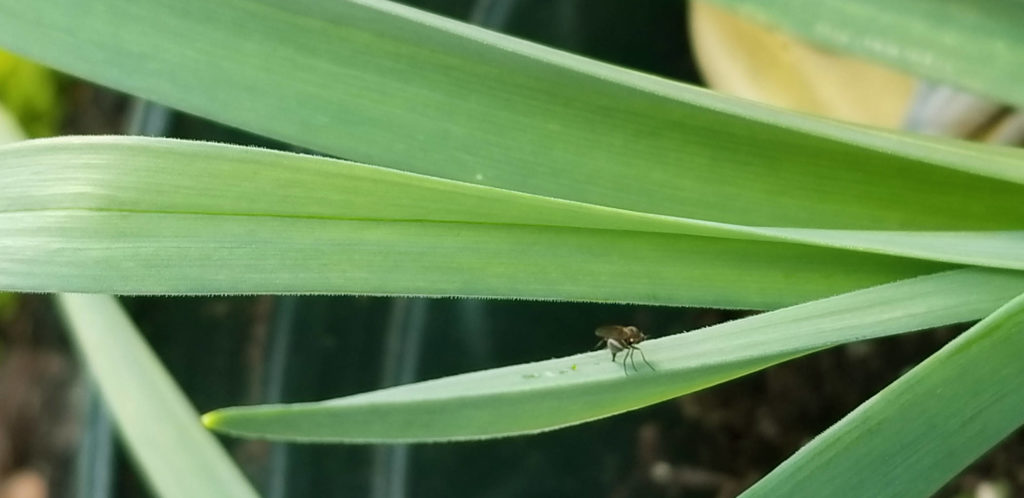
Click here to see ALM female in action.
The resulting damage appears as a series of round white spots (Photo 5). Both male and female flies feed on leaf exudates from these damaged areas.
One week after making the punctures, the female lays whitish, slightly curved eggs in the leaves. When eggs hatch, the yellowish larvae, 8 mm in length, mine down inside the leaf, leaving trails that widen as they travel down to the stem. The larvae then pupate in the stem, producing 3.5 mm long oval, reddish to dark brown pupae. The pupae can be found in the soil surface outside the plant until September, when adults emerge for the second generation. The cycle repeats in the fall and the pupae overwinter until next spring.
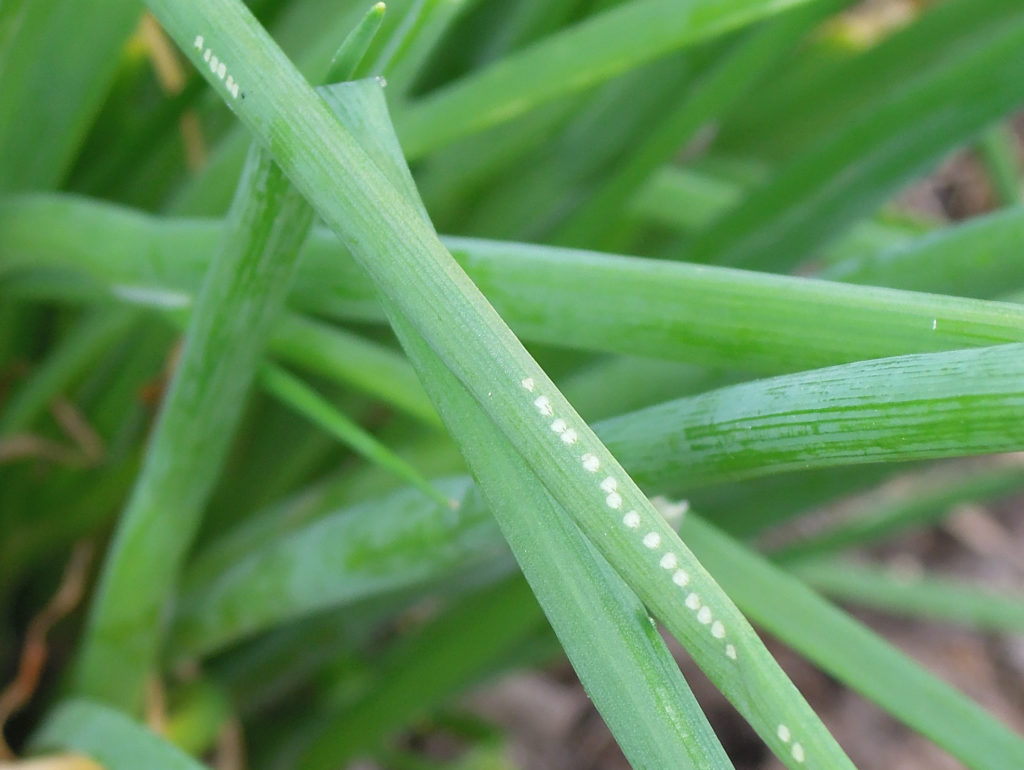
Allium Leafminer Damage
In addition to foliage damage and depending on the time of the year, you might find pupae and/or larvae as shown in leeks (Photo 6), onion bulbs, and garlic cloves. All life stages produce damage making the allium crop non-marketable and can lead to tremendous losses for growers.
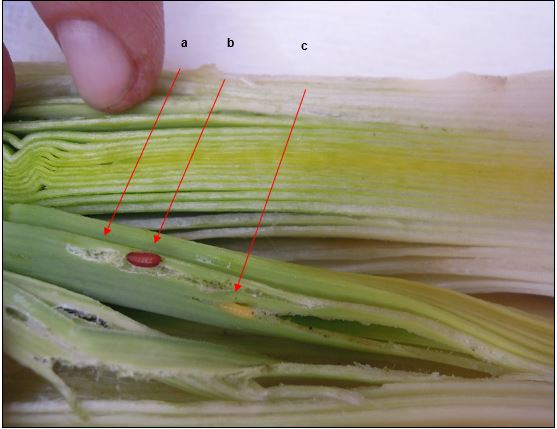
What Can You Do?
At Rodale Institute, we have been working to expand our knowledge for managing allium leafminer organically. In a nutshell, results from two-year field trials have shown that using multiple tools in the toolbox can reduce crop losses to allium leafminer damage. These tools include yellow sticky cards to monitor the emergence and arrival of ALM to the location, row covers to prevent ALM from laying eggs into young allium seedlings until around May 5th, and brassica cover crops prior to planting alliums. Such tools can be employed by organic allium growers and home gardeners.
As we continue to analyze the results of these trials, more detailed information will become available to our readers when posted online at Rodale Institute’s website www.rodaleinstitute.org/science/articles.
At Rodale Institute, we are committed to developing and improving strategies to help organic farmers be more successful, feed the world without chemicals, and improve human and planetary health. Please help us in this effort by adding more participants to our survey.
